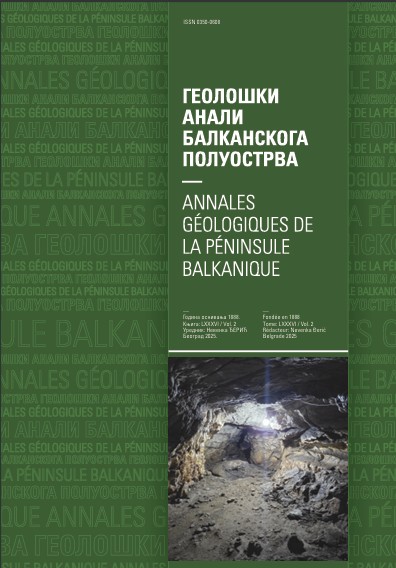Fossils from the Upper Miocene (Pannonian) sands of the Pécsvárad sand pit (Eastern Mecsek Mts., SW Hungary)
Abstract
The Mecsek Mountains in SW Hungary represent an uplifted basement block of the Pannonian Basin. Their Neogene cover includes deposits both from the Middle Miocene Central Paratethys and from its Late Miocene (Pannonian) brackish-water descendant, Lake Pannon. Along the mountain front, the Pannonian sands of the Pécsvárad sand pit contain a mixed vertebrate fossil assemblage, which gives insight into terrestrial and aquatic biota during various time intervals of the Miocene. The fossil-bearing sands accumulated between 7.6–6.8 Ma, in a high-energy littoral setting of Lake Pannon, as indicated by the mollusc remains. The vertebrate fossil assemblage is relatively diverse compared to the number of finds. The most abundant group, aquatic mammals, encompasses a minimum of four odontocete species and a few mysticete taxa, which originally lived in the Paratethys during the Badenian and the Sarmatian. Rhinoceratid remains are reworked from sediments aged somewhere between the Karpatian and earliest Pannonian. The single shark tooth must be Badenian, and the scombrid fishes probably also date back to that age. Fossils of other fishes (sparids, latids and acipenserids), giant salamanders, turtles, crocodilians and cervids might originate from older Miocene deposits but can be coeval with the host sands as well. Tapirs and giraffids must have lived on the lakeshores of Lake Pannon, probably contemporaneously with sand deposition or not much earlier. The erosion, enrichment and mixing of the fauna is a result of the uplift and denudation of the Mecsek Mountains during Lake Pannon sedimentation, caused by neotectonic basin inversion. This example shows that in spite of the uncertainties in the dating of some fossils, mixed faunas can provide important data on the evolution history of an area.
Copyright (c) 2024 Geološki anali Balkanskoga poluostrva

This work is licensed under a Creative Commons Attribution 4.0 International License.










